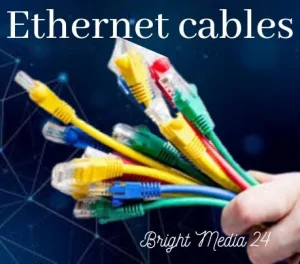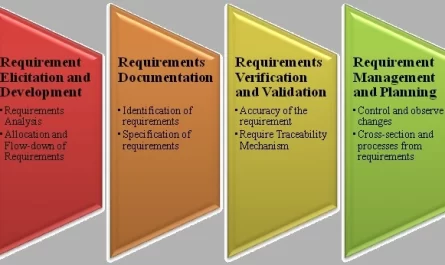Networking Cables
Networking cables are an essential component of any computer network, whether it is a small local area network (LAN) or a large wide area network (WAN). These cables are responsible for transferring data between devices and allowing them to communicate with each other. Without networking cables, it would be impossible to connect computers, printers, servers, and other network devices to form a functional network. Networking cables come in a variety of varieties, each with their own specific uses and characteristics. When setting up a network or troubleshooting it is important to understand the different types of networking cables available. In this age of technological advancement, where the need for faster and more reliable data transfer is increasing, networking cables have become even more important for businesses and individuals alike.
While wireless may be the wave of the future, most computer networks today still utilize cables to transfer signals from one point to another.
There are several types of networking cables commonly used for different purposes. Here are some of the most common types:
Ethernet cable
Ethernet cables are the most commonly used type of networking cable for connecting devices to a wired network. These cables transmit data through twisted pairs of copper wires, which are shielded to reduce interference from other electrical signals.
Ethernet cables are also available in different lengths and colors, making it easy to customize network installations to suit specific needs. They come with different connector types, including RJ45 and Ethernet plugs, which are used to connect the cable to devices such as computers, routers, switches, and modems. When setting up an Ethernet network, it’s essential to choose the right cable type and length for the specific application. Cables that are too long or too short can cause signal loss or interference, resulting in slower data transmission rates or dropped connections. It’s also important to properly terminate the cable using the appropriate connectors to ensure a reliable connection.
Ethernet cables are an essential component of any wired network, and their flexibility and reliability make them an excellent choice for most networking applications. With the right type and installation, Ethernet cables can provide fast, secure, and consistent data transmission, allowing businesses and individuals to stay connected and productive.
There are different categories or types of Ethernet cables, each with different specifications, speeds, and purposes. The most common Ethernet cable categories include: Cat5, Cat5e, Cat6, Cat6a, Cat7, Cat8 etc.
Coaxial cable
Optical fiber cable
An optical fiber cable is a cable containing one or more optical fibers. The optical fiber elements are typically individually coated with plastic layers and contained in a protective tube suitable for the environment where the cable will be deployed.
Twisted pair cable
A twisted pair cable is a type of cable used for transmitting data signals over a network. It consists of two insulated copper wires twisted together in a helical shape. The twisting of the wires helps to reduce electromagnetic interference and crosstalk, which can degrade the quality of the signal and affect data transmission speeds.
There are two types of twisted pair cables: unshielded twisted pair (UTP) and shielded twisted pair (STP). UTP is the most common type of twisted pair cable and is used in most Ethernet networks. It consists of two insulated copper wires twisted together and does not have any additional shielding. STP, on the other hand, has a layer of shielding around the twisted wires, providing extra protection against interference and noise.
Twisted pair cables are typically terminated with an RJ45 connector, which is commonly used for Ethernet connections. They are available in different categories or types, each with different specifications for maximum data transmission speeds and signal quality. Cat5e and Cat6 are the most common types of twisted pair cables used today, with Cat6 providing higher speeds and better signal quality than Cat5e.
Twisted pair cables are a popular choice for network cabling due to their low cost, flexibility, and ease of installation. They can be used in a variety of network applications, including Ethernet, telephone, and home automation systems. However, the quality of the installation and termination can affect the performance of the cable and should be done carefully to ensure optimal signal quality and data transmission speeds.
USB cable
A USB cable is a type of cable used to connect electronic devices to a computer or other host device. USB stands for Universal Serial Bus, and it is a standard interface that allows different devices to communicate with each other. USB cables can transfer data, provide power, and charge devices.
There are several types of USB cables, including: USB-A to USB-B, USB-A to USB-C, USB-A to Micro-USB, USB-C to USB-C etc.
USB cables come in different lengths and can be found in a variety of colors and styles. They can also be used with USB hubs, which allow multiple USB devices to be connected to a single port on a computer.
In addition to data transfer, USB cables can also provide power to devices through a process known as USB power delivery (PD). This allows devices to charge quickly and efficiently, without the need for a separate power adapter. USB cables with PD support can also be used to power and charge laptops and other high-powered devices.
Overall, USB cables are a versatile and widely used type of cable that allow for easy data transfer and device charging. The various types and styles of USB cables make them suitable for use with a wide range of devices, from smartphones and tablets to printers and cameras.





